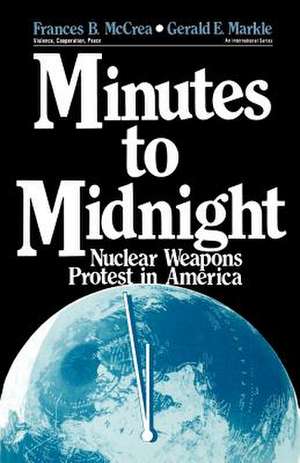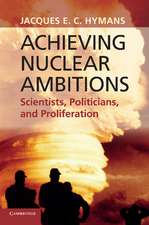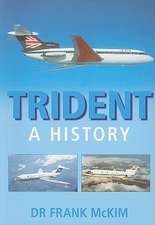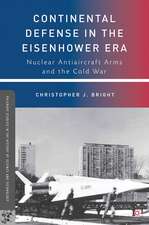Minutes to Midnight: Nuclear Weapons Protest in America: Violence, Cooperation, Peace, cartea 3
Autor Frances B. McCrea, Gerald E. Markleen Limba Engleză Paperback – 5 oct 1989
| Toate formatele și edițiile | Preț | Express |
|---|---|---|
| Paperback (1) | 787.66 lei 6-8 săpt. | |
| SAGE Publications – 5 oct 1989 | 787.66 lei 6-8 săpt. | |
| Hardback (1) | 993.26 lei 6-8 săpt. | |
| SAGE Publications – 5 oct 1989 | 993.26 lei 6-8 săpt. |
Preț: 787.66 lei
Preț vechi: 960.56 lei
-18% Nou
Puncte Express: 1181
Preț estimativ în valută:
150.72€ • 164.23$ • 127.00£
150.72€ • 164.23$ • 127.00£
Carte tipărită la comandă
Livrare economică 24 aprilie-08 mai
Preluare comenzi: 021 569.72.76
Specificații
ISBN-13: 9780803934184
ISBN-10: 0803934181
Pagini: 200
Dimensiuni: 141 x 215 x 14 mm
Greutate: 0.29 kg
Ediția:1
Editura: SAGE Publications
Colecția Sage Publications, Inc
Seria Violence, Cooperation, Peace
Locul publicării:Thousand Oaks, United States
ISBN-10: 0803934181
Pagini: 200
Dimensiuni: 141 x 215 x 14 mm
Greutate: 0.29 kg
Ediția:1
Editura: SAGE Publications
Colecția Sage Publications, Inc
Seria Violence, Cooperation, Peace
Locul publicării:Thousand Oaks, United States
Cuprins
The Rise and Fall of the Freeze
Social Problems in Postindustrial Society
Atomic Scientists Movement and the Bulletin
Ban the Bomb
The Freeze
Origins, Growth and Decline
The Freeze
Strategy, Tactics and Social Control
Beyond the Freeze
Social Problems in Postindustrial Society
Atomic Scientists Movement and the Bulletin
Ban the Bomb
The Freeze
Origins, Growth and Decline
The Freeze
Strategy, Tactics and Social Control
Beyond the Freeze
Descriere
Minutes to Midnight explores the dynamics of the antinuclear protest movement, particularly the freeze and its origins, growth, decline, and enduring problems. Beginning with a historical analysis of early attempts to control nuclear weapons, the authors then use a unique sociohistorical case study to give new insight into how social change occurs in postindustrial society. The seven chapters examine the problems created by the development of technology, nuclear weapons, and the creation of new social classes and new social movements as vehicles to accumulate power.













